- Category
- War in Ukraine
From Syria to Ukraine, Russia Weaponizes Fear and Destruction Using Double-Tap Strikes
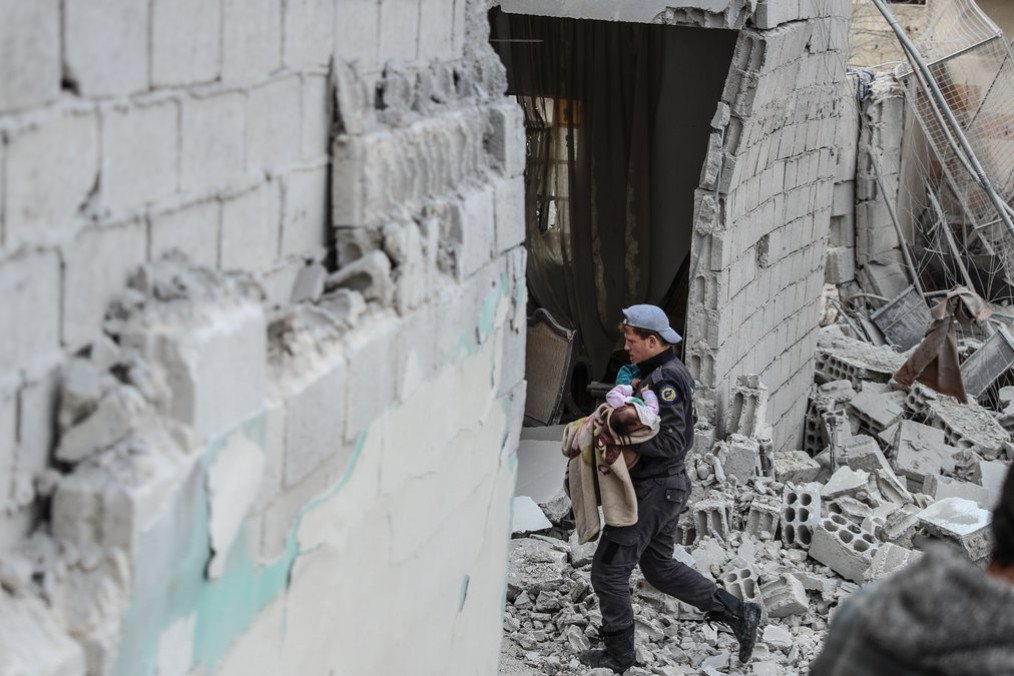
Putin and Assad’s regimes have terrorized Syrians and Ukrainians for more than a decade now. The lack of accountability for their war crimes has fostered a sense of impunity, contributing to Russia's ongoing invasion of Ukraine.
They have tested various modern warfare techniques on civilians. They have launched hypersonic missiles, guided bombs, chemical weapons, and FPV drones at hospitals, schools, and markets.
The double-tap strike is one of the most cruel and harmful methods they have both used. Both Syrians and Ukrainians are all too familiar with this phenomenon, employed by the Russian and Syrian regimes to target civilians and first responders.
Overview of double-tapping
A double-tap refers to the tactic of initially striking a location and then striking it again shortly after—specifically when first responders arrive. This strategy can be distinguished from other types of strikes by its deliberate targeting of civilians, journalists, and rescue workers, who are usually the first on-site to offer help to the wounded.
Both Syria and Russia use double-tap strikes to sow fear among civilians and maximize harm. It started with the war in Syria, where Assad’s forces, backed by Russia later, utilized this strategy to silence anyone opposing the regime and suppress any rebel uprising. The same method of terror is being used now by Russia in its full-scale invasion of Ukraine.
The practice is considered a war crime if proven to deliberately target civilians and rescuers since it egregiously violates International Humanitarian Law, including the Geneva Conventions of 1949, which forbid targeting civilians and the wounded.
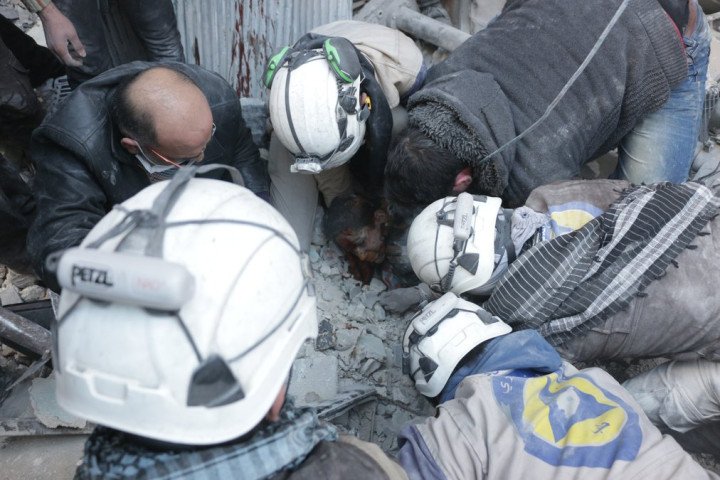
Double-tapping in Syria
In Syria, this criminal tactic was used by the Assad and Putin regimes to strike civilians living in the opposition-controlled areas, including Eastern Ghouta in the Damascus countryside, Daraa and Idlib Governorates, the city of Homs, and the eastern neighborhoods of Aleppo.
The Syria Justice and Accountability Centre’s (SJAC) report on double-tap strikes in Syria between 2013 and 2021 lists tens of incidents, proving double-tapping is a strategy, not a military mistake. Russia’s interference in Syria in 2015 made the double-tap strikes more precise due to the introduction of Russian fighter jets.
Syria Civil Defence
No one is more familiar with double strikes than the “White Helmets,” officially the “Syria Civil Defence” (SCD). This volunteer organization works to save lives and gather evidence of war crimes in the opposition-controlled areas of Syria. They are an independent rescue organization, pledging no allegiance to any side in the conflict.
The Syria Civil Defence’s work—gathering evidence of appalling war crimes—made them a desired target of the Assad regime and Russia, targeting them in double-tap strikes and using disinformation campaigns to damage their reputation, calling the volunteers “terrorists” and “Western agents”.
The “White Helmets” have lost 282 of its volunteers since 2013, more than half of them in double-tap strikes. In areas reclaimed by the Syrian regime, these volunteers are pursued and detained.
Estimating the number of civilian casualties in Syria, caused by Syrian and Russian airstrikes, including double-tap strikes, over the years is an impossible mission due to the frequency of attacks and extensive destruction.
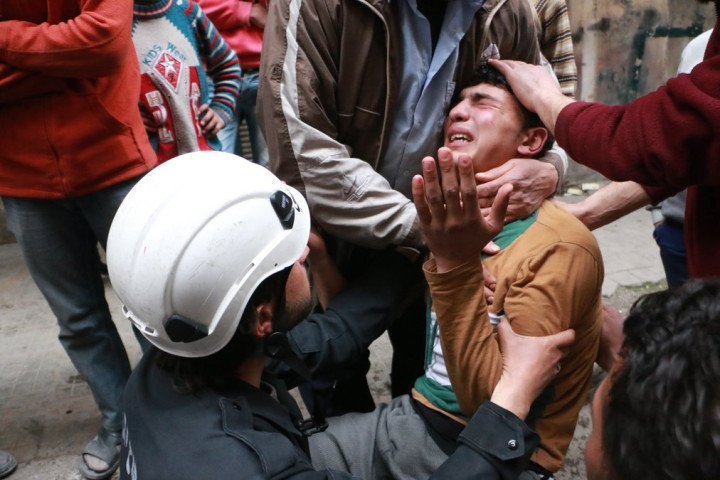
Hamza AlKateab, a Syrian doctor
Hamza AlKateab is a Syrian doctor who worked in eastern Aleppo from 2012 to 2016 as an emergency doctor, ENT doctor, and the hospital manager of the Al-Quds Hospital. He was the manager of Al-Quds Hospital during the siege of Aleppo and was responsible for the medical evacuation in the city.
In 2012, and until the White Helmets were created and structured, health workers used to be the ones responding to the closest attacks, sending whoever was available, nurses, volunteers, or doctors.
“For me, that was the scariest part. You had to be there, working in a bad situation, with people trapped under rubble, working carefully, but at the same time watching over your head for mortar attacks or barrel bombs. It was very scary, because you had no other option but to be there,” Dr AlKateab remembers.
When responding to attacks the chances of getting targeted were very high. That’s why responders would wait for 5-10 minutes before running to the place of the attack to help people.
“It’s scary [double-tap attacks], inhumane, and basically a deliberate targeting of whoever survived the first attack. It’s a clear war crime,” said Dr AlKateab.
In his opinion, the double-tap attacks are used to crush the spirits of the people, plant fear in their hearts and kill their resilience, forcing them to leave the city, therefore making it easier for the military to advance if the city is empty.
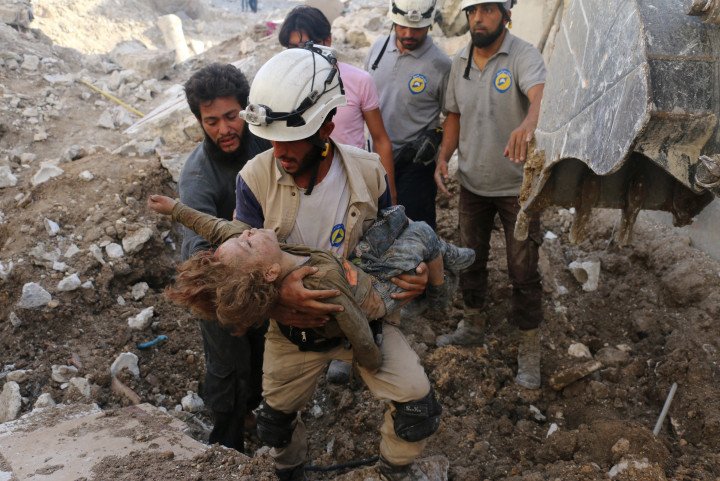
Examples of double-tapping in Syria
SJAC's Open-Source Intelligence (OSINT) Investigators conducted an extensive investigation into double-tap strikes carried out in Syria. They systematically gathered and analyzed information from social media platforms, media reports, and satellite imagery.
For this report, only incidents which had enough evidence supporting it were considered. SJAC identified 58 incidents of double-tap strikes from 2013 to 2021 across Syria.
The investigators verified three key elements in order to include a double-tape case in the report:
pinpointing the location of the initial strike
confirming the arrival of first responders or civilians at the site following the strike
the occurrence of at least one subsequent attack on the same location within an hour of the initial strike's aftermath.
Al-Kamooneh IDP Camp
In northern Idlib, Al-Kamooneh Camp provided temporary shelter for internally displaced persons, many of whom fled from northern and western Aleppo.
Around 16:30 on May 5, 2016, what was believed to be a Russian aircraft attacked the Al-Kamooneh camp. It hit the center of the camp first, with a second strike following soon after. The witnesses reported at least 14 people getting killed after the initial strike. One child from the camp said, “My uncle witnessed people burning.”
The second strike hit the tent that served as a space for a school. All the children inside were killed.
Then a third strike followed, killing volunteers and humanitarian workers who gathered to help the injured. Overall, around 45 people were killed and 70 were injured.

Douma Airstrike
Syrian and Russian aircraft started targeting Douma city in March 2018. Civilians and humanitarian workers were constantly attacked with white phosphorous, barrel bombs, and cluster munitions.
One of the documented accidents occurred on March 19, 2018, when a vehicle of the Syrian Civil Defence was targeted. The White Helmets rescuers were helping the injured after the first strike when the second strike hit. Overall, 15 people were killed, including 3 children.
As-Sukkari Double-tap Strike
On June 16, 2014, an airstrike targeted a market on Al-Wakalat Street near a relief center, dropping a barrel bomb. While people were gathered at the spot and dust was still in the air after the first strike, an aircraft dropped another barrel bomb, causing massive casualties, killing around 80 people, including seven children. According to the gathered data, the Syrian Armed Forces are suspected to be behind the attack.
One of the rescuers who rushed to the site that day was Ismail Alabdullah, a volunteer in the Syria Civil Defence since 2013. He started his volunteering journey even before the official establishment of the Syrian Civil Defence when separate groups of people would gather on their own initiative, using tools and vehicles available to rescue people in need.
"The primary goal of using this tactic [double-tap strikes] is to kill the largest number of people and to prevent rescue teams from responding, to spread terror among people and sow fear, and to break people’s will to hold on and survive," said Ismail. “The first and main goal is to break morale and force people to retreat and leave their houses. Goals that work for the benefit of the system.”
Ismail said that during his years of volunteering, he had encountered many instances of double-tap strikes and grieved many friends.
“I lost many fellow volunteers in the double strikes: Ayman Satr, Muhammad Mashhadi, Ihab Houria. The list goes on, many names,” Ismail recalled.
Double-tapping in Ukraine
Double tapping has not bypassed Ukrainians either, with Russia using this inhumane tactic to target civilians. The Russian forces utilized double-tap strikes in various Ukrainian cities, including Kharkiv, Odesa, Zaporizhzhia, Kherson, Bakhmut, and Pokrovsk.
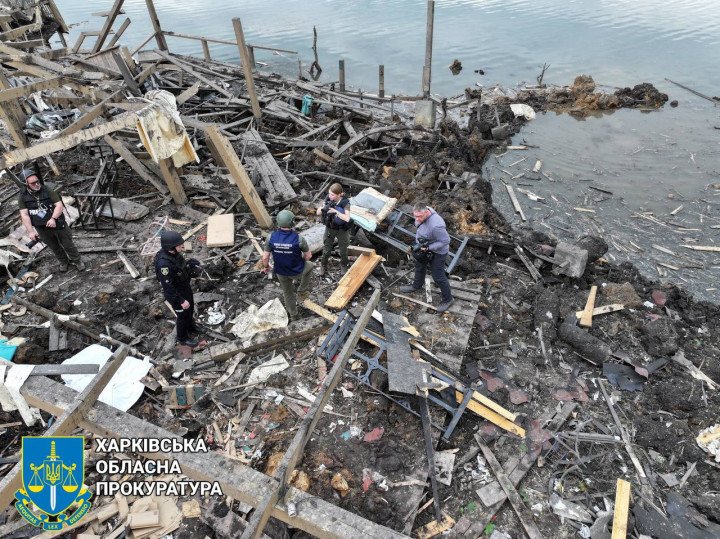
Cherkaska Lozova recreation center
One of the clear examples of targeting civilian sites happened on May 19, 2024, when Russia hit a recreation center with an Iskander missile in Cherkaska Lozova, a village in the Kharkiv city suburbs, where local residents were resting.
Shortly after, Russia launched a second missile, this time when policemen and rescuers had already gathered after the first strike to help the wounded. As a result, six people were killed, including a pregnant woman. 27 people were wounded, including a paramedic and two policemen.
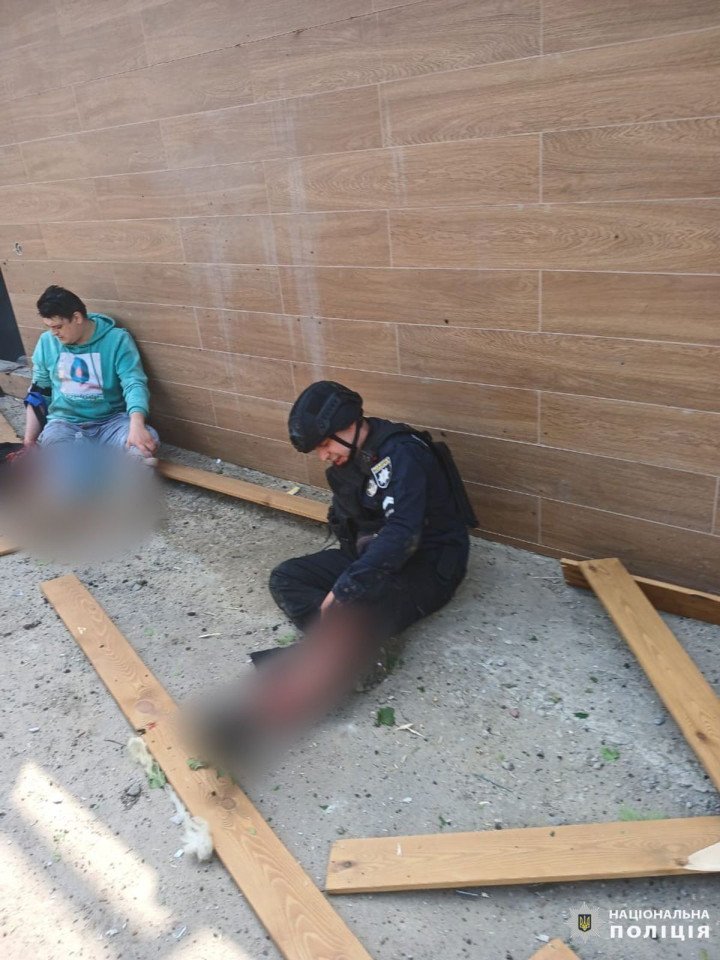
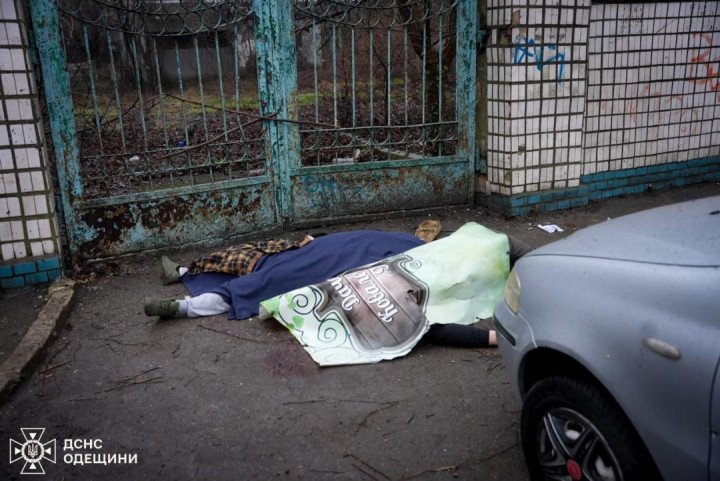
Odesa
Russia employed the same double-tap tactic earlier, on March 15, in the Ukrainian port city of Odesa, killing 20 people and injuring 73. Again, emergency workers and civilians were among the casualties, 2 rescuers were killed and at least 8 wounded.
"This day differed from all my other shifts because of this strike... so many victims. When I saw my friends, my dear guys, whom I said goodbye to two hours ago... it was the first time such a situation has occurred", said Mykola Malyshenko, the Head of one of the Emergency departments.
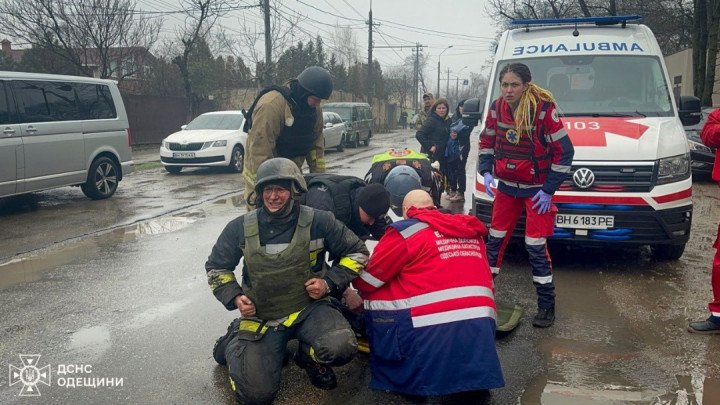
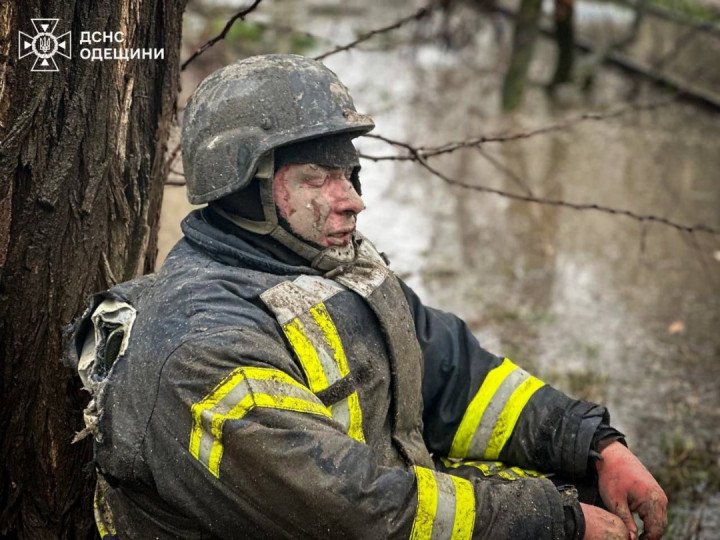
Kharkiv
Russian forces have relentlessly bombed Kharkiv since the first days of the full-scale invasion.
On the night of April 3-4, 2024, Russia struck a residential building. After waiting for the rescuers to arrive, it launched a repeated drone attack, targeting the State Emergency Service workers, killing 4 people, 3 of them were rescuers, and injuring more than 10 people, including an emergency nurse.
The aforementioned airstrikes contribute to mounting evidence of Russia's intention to target civilians through indiscriminate attacks, including medics and emergency workers.
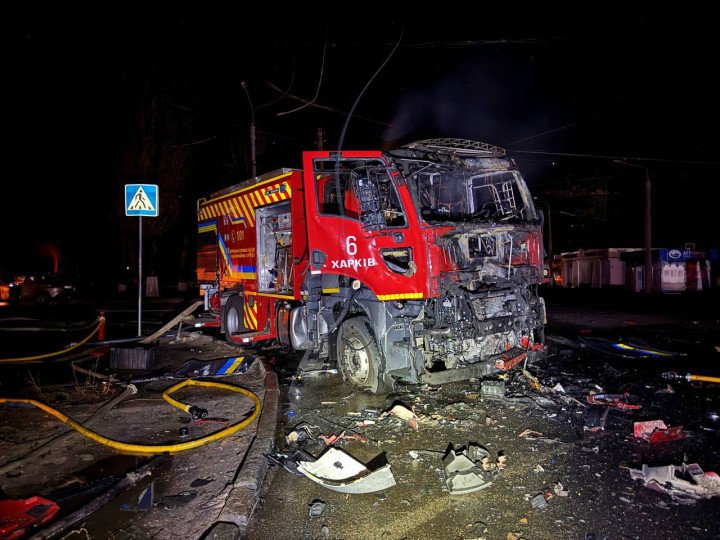
There is no world, where double-tapping civilian sites would be considered acceptable, tolerating cruelty is not normal. However, neither the Russian nor Syrian regimes have borne the consequences of their inhumane actions. Their crimes remained unpunished for almost a decade in Syria, opening the door for Russia to practice its double-tapping skills on Ukrainians.
While Russia’s goal in targeting civilians is to instill fear and panic, it ultimately strengthens many Ukrainians and Syrians, making them more determined to continue fighting for their freedom.
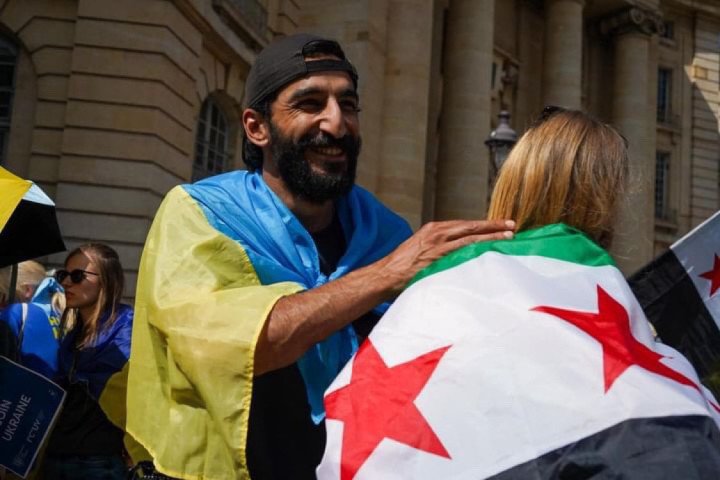
-f88628fa403b11af0b72ec7b062ce954.jpeg)
-531fe8d92c87f1630d3f1a2503c33089.png)

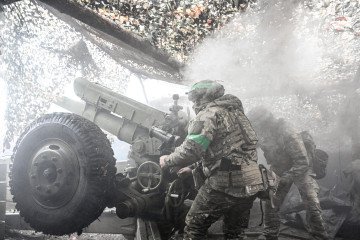
-29a1a43aba23f9bb779a1ac8b98d2121.jpeg)
-886b3bf9b784dd9e80ce2881d3289ad8.png)

